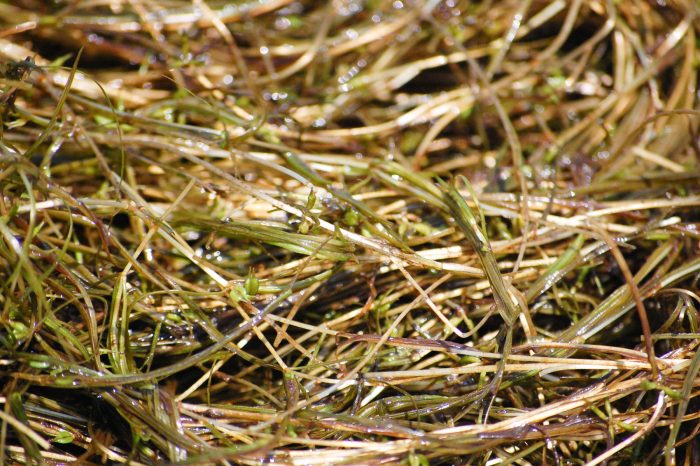Horned Pondweed
Zannichellia palustris
Horned pondweed is an underwater grass with long, thread-like leaves and distinctive horned seeds in spring. It grows in fresh and medium-salinity tidal waters of the Chesapeake Bay and its rivers.

